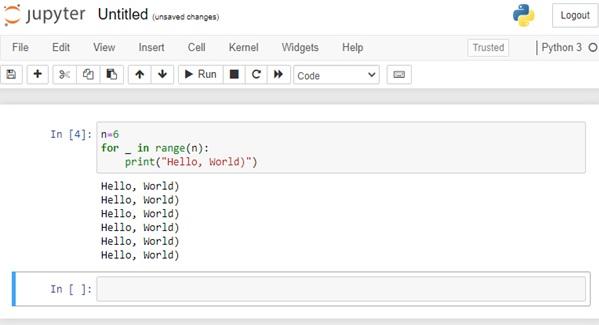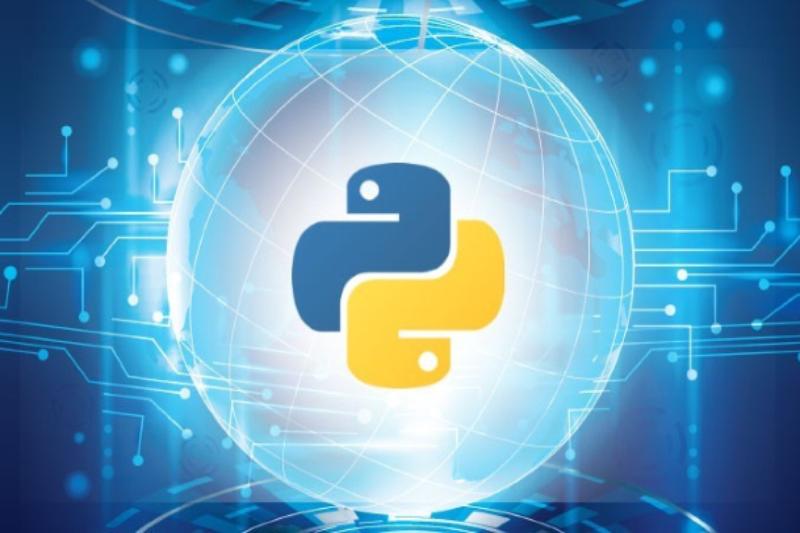How To Install Python On Different Operating Systems? Install Python On Anaconda, Mac And Linux
Install Python On Anaconda, Mac, And Linux; Python Plays A Role Similar To The French Wrench In The World Of Information Technology And Can Be Used In Almost All Fields Of Technology.
This issue has caused experts in various fields, such as artificial intelligence, security, networks, web, mobile, etc., to use Python to carry out their activities.
This article will teach how to install Python in different environments.
Install Anaconda and Python
In this article, we use Python programming language to learn the machine. Accordingly, installing Python and integrated development environments in our computer system is necessary. Anaconda Distribution is a free, open-source Python and R programming language infrastructure.
This distribution can easily be installed on any operating system, such as Windows, Linux, and Mac. It provides more than 1,500 data science packages for R and Python programmers to develop deep learning and machine learning models efficiently.
Anaconda distribution possibly installs Python, which integrates with various development environments such as Jupyter Notebook, Spyder, Anaconda Prompt, etc.
Anaconda automatically installsPythonn and some of its core integrated development environments and associated libraries. Hence, it is an efficient packaged solution you can download and install on your system. Here are the steps you need to download and install the Anaconda package and integrated development environment:
Step 1: Download Anaconda Python
- To download Anaconda on your system, open your favorite browser, type Download Anaconda Python, and click the link. We suggest you use the following direct download for this purpose:
https://www.anaconda.com/distribution (Link)
After clicking on the link above (or the first link), you will reach the Anaconda download page, as shown in the image below:
- Since Anaconda is available for Windows, Linux, and Mac, you should choose the option that is compatible with your operating system and the choices you see in the image below.
Step 2: Install Anaconda Python (version 3.8)
- When the download process is complete, click on the executable file stored on the computer called Anaconda3-2020.07-Windowsx86_64.exe to run the Anaconda installation file.
- It will make the Anaconda installation window appear, as shown below. Now click the Next button.

Next, click the I Agree License Agreement option to see the following window.

- You must select two installation options in the next window, as shown in the image below. Select the first option (Just me) and click the Next button.

- You will now see a window asking for the installation location. Select the default option and click the Next button without changing the installation path.

- Select the second option and click the install button in the next step.

- It will start the installation process. Fortunately, this process is not time-consuming and will be completed very soon.

- When the installation is complete, click the Next button.


- The installation is now complete. Check the box to get more information about Anaconda and Anaconda cloud. Click the Finish button to complete the installation.

Note: We use Jupyter Notebooks to run Python applications.
Step 3: Open Anaconda Navigator
- Once the Anaconda installation is complete, use the Anaconda Navigation to run an integrated development environment like Jupyter Notebook. Click the Start menu in Windows 10 to open the Anaconda Navigation and click the Anaconda Navigator option.

- You will see a window like the one below that provides access to the various tools that Python programmers and data science experts need.

- In the preview window, click the Lunch button at the bottom of the Jupyter Notebook. It will run Jupyter Notebook with a browser-centric interface. This interface provides an interactive environment for performing calculations. Note that clicking on the button above will show a window for selecting the browser in which Jupiter Notebook is to be run.

- Now, you need to run the Python interactive environment to be able to write your Python applications into the Jupyter Notebook. To do this, click the New button on the right side of the image and select the Python Three option. Clicking the button above will run Jupyter Notebook, as shown below.

- Write the code in the cell shown. Then click on the Run button, which is in a triangle, to run the program.

- The output of the command you type is displayed in the lower window.

Working with Mac
If you are using a Mac, you probably already have Python installed. However, you may establish an older version on your system, orPythonn may remove it from the system for some reason. For example, the Leopard OS X version (version 10.5) uses an old version of Python 2.5.1. This particular version does not have direct access to the IDLE program.
Depending on how you use Python, you may want to upgrade your installation in some cases. Part of that process involves installing the GNU Compiler Collection tools so that Python can access the low-level resources it needs. Follow the steps below to install the new version of Python on Mac OS X.
1. First, go to https://www.python.org/downloads/macos (Link)
2. Click on the appropriate link for the Mac version. Our recommendation is to choose the 64-bit version. We recommend you click on Python 3.10.4 – March 24, 2022, the latest version of this article released for the Mac.
Clicking on the link above starts the process of downloading the Python image. Wait for the download to finish. Your Mac will automatically open the image disc when the download is complete.
The disk image looks like a folder. Inside this folder are many WiFi, including Python. Pkg. You see thePythonn—pkg file, which contains the Python program. Text files contain information about the build, license, and any notes associated with your downloaded version.
3. Double click onPythonn. Pkg.
You’ll see a welcome dialog box about this particular Python build.
4. Click Continue three times.
The installer displays notes about Python, such as license information (click Agree when prompted for license information) and a dialog box that specifies the destination.
5. Select the volume, hard disk, or media on which Python will be installed and click Continue. The Installation Type dialog box appears. This dialog box does two things:
- Click Customize to change the set of features installed on the system.
- If you want to install Python on a location other than the default option, click the Change Install Location button.
6. Click Install.
The installer may request the administrator password. Type the administrator name and password in the dialog box and click OK if necessary. You will see a Python installation dialog box. The contents of this dialog box change as the installation process progresses, giving information about the installer’s activities. After the installation is complete, you will see the Install Succeeded dialog box.
7. Click Close.
Python is now ready to use. (At this point, you can close the disk image and delete it from your system.)
Working with Linux
Some versions of Linux come with Python. For example, suppose you have a Red Hat Package Manager (RPM) -based distribution (SUSE, Red Hat, Yellow Dog, Fedora Core, and CentOS). In that case, you probably already have Python on your system and do not need to do anything special.
Depending on which version of Linux you are using, the Python version differs, and some systems do not have an Interactive Development Environment (IDLE) program. If you have an older version of Python (2.5.1 or earlier), we suggest installing the latest version to access IDLE.
You have two techniques for installing Python on Linux, both of which we will explore. The first technique works on any Linux distribution, while the second technique has specific criteria you must follow.
Using the standard Linux installation option
The standard Linux installation option works on any system. However, you must work in a terminal and type commands to complete it. Some orders that you must vary depending on the Linux version. See https://docs.python-guide.org/starting/install3/linux (Link) for more information.
1. First, go to https://www.python.org/downloads/source (Link).
2. Select the appropriate option for the Linux version.
3. When asked if you want to open or save the file, select Save. Python source files start downloading. Be patient until all files are downloaded.
4. Double-click on the downloaded file. The Archive Manager window opens. Unzip the file to see the Python folder in the Archive Manager window.
Double-click the Python folder. The archive manager opens the files under the Python folder.
6. Open a terminal window. If you have not installed the software, you must install Build Essentials, SQLite, and bzip2; otherwise, Python installation will fail. If there are basic requirements, go to step 10.
7. Type sudo apt-get install build-essential, and press enter. Linux begins the Build Essential required to build packages. See https://packages.debian.org/sid/build-essential (Link) for more information.
8. Type sudo apt-get, install libsqlite3-dev, and press enter. Linux installs the SQLite required by the Python database. See https://packages.debian.org/squeeze (Link) for more information.
9. Type sudo apt-get install libbz2-dev and press the Enter key. Linux installs the required Python bzip2. See https://packages.debian.org/sid/libbz2-dev (Link) for more information.
10. Type CD Python 3.3.4 (note that you must enter the correct folder name during installation) in the terminal window and press Enter. The terminal changes directories to a Python 3.3.4 folder on your system.
11. configure /. Type and press the Enter key.
A script is run to check the system, and then a series of background tasks are performed on your system. This process may take a minute or two because of an extensive list of items to review.
12. Type make and press Enter. Linux runs the make script to create Python application software. The build process may take up to a minute, depending on how fast your system is processing.
13. Type sudo, make alt install, and press Enter. At this point, the system may ask you for an administrator password. Type the admin password and press Enter.
Installation via Linux Graphical Interface
All versions of Linux support the standard installation mentioned above. However, some versions of Debian-based Linux distributions, such as Ubuntu 12. x and later also offers a graphical installation technique. This method would help if you had the admin group password (sudo).
The following describes the graphical installation technique for Ubuntu, but this technique can be used on other Linux distributions :
- Open the Ubuntu Software Center folder. (The folder may be called Synaptics on other platforms). You can see a list of the most popular software available for download and installation.
- Select Developer (or Development) tools from the All Software drop-down list box, and You will now see a list of development tools, including Python.
- Double-click the Python 3.3.4 entry. Ubuntu Software Center provides details on Python 3.3.4 input and suggests its installation.
- Click Install. Ubuntu begins the Python installation process. In this case, the progress bar shows the progress of the work when the installation is complete; the Install button changes to the Remove button.
- Close the Ubuntu Software Center folder. The Python icon has been added to the desktop, and you are now ready to use Python.

